Photographs: Reuters Nishanth Vasudevan in Mumbai
Two categories of market participants seem to have made a lot of money in the past couple of weeks, short-sellers and volatility traders.
The first category has made a killing by simply betting on downsides through futures or options.
The strategy is always considered relatively risky, as there is always a chance of these directional bets going awry. It is the second category, volatility traders, who have at least doubled their money, with lower risk.
...
How savvy D-Street traders doubled money in August
Photographs: Reuters
Who?
Volatility (‘vol’) traders use pairs of options to bet on indices and stocks. Usually, traders purchase a call or a put option, depending on how they expect an index or a stock to behave.
If the stock is seen rising, they buy calls and if the stock is expected to fall, they buy puts. But there are a set of savvier traders, who do not bet on the direction of the stock or the index.
Instead, they look to profit from a sharp move in the stock on either side. These are vol traders, usually part of proprietary desks, foreign banks or high net worth individuals.
…
How savvy D-Street traders doubled money in August
Photographs: Reuters
Why called so?
Vol traders base their trades on the implied volatility (IV) of options. IV, traders’ expectations of near-term risks in the market, based on options prices, is a key aspect of options’ premium pricing.
When IVs rise, options’ premium values also rise and vice versa. So, vol traders who expect IVs to rise are betting that options premiums will move up.
Premiums of options are like those of insurance; whenever the perception is that risks are high, premiums also rise and vice versa.
…
How savvy D-Street traders doubled money in August
Photographs: Reuters
How and when?
Vol traders simultaneously buy a call and a put option of a stock or an index of the same expiry.
Such trades are usually initiated when expectations of a steep fall are high or before key events, the outcome of which are difficult to guess and are likely to spark sharp movements in stock prices.
For instance, the outcome of a general election, which has a huge bearing on the market, is difficult to guess. A trading strategy betting on a rise or a fall in the market on such days can be risky. Hence, traders would buy pairs of Nifty options that are structured to benefit from a sharp move either side.
…
How savvy D-Street traders doubled money in August
Image: Bombay Stock ExchangePhotographs: Hitesh Harisinghani/Rediff.com
Why is vol trading relevant now?
The sharp climb in IVs in August because of the heightened risk perception about the market’s outlook has helped traders make a killing.
NSE’s Volatility Index (VIX), the only publicly available gauge to track IVs of Nifty options, climbed to as high as 36 early on Wednesday, after moving in a range of 13.6-20 between January and early August.
VIX ended at 32 on Wednesday, after the markets recovered later in the trade. Analysts said many traders who initiated vol trades early in August would have easily doubled their money by now.
Fortune Equity Brokers’ Ashish Chaturmohta says a trader who simultaneously bought a Nifty put of 5,700 strike at a premium of about Rs 55 and a Nifty call of 5,800 call at a premium of Rs 51 on August 14 would have paid a total of Rs 106 as premiums.
Today, the total value of both these premiums is Rs 400, he said, a four-fold profit.
…
How savvy D-Street traders doubled money in August
Image: Bombay Stock ExchangePhotographs: Hitesh Harisinghani/Rediff.com
Highest level for VIX
The VIX crossed 80 in October 2008 at the peak of the global financial crisis after the collapse of US investment bank Lehman Brothers.
Loss possibilities
For traders betting on a rise in IVs (VIX), the maximum they can lose is the premium they paid to buy the options when the index or the stock does not move sharply.
However, traders who bet on a fall in IVs (VIX) by selling pairs of call and put options face the risk of unlimited losses, in theory.

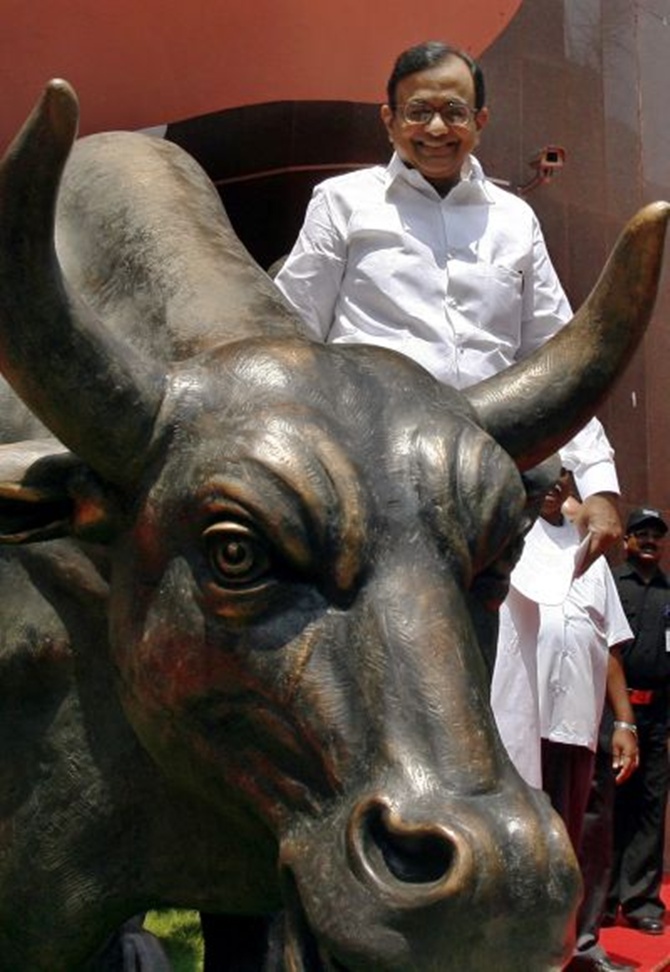
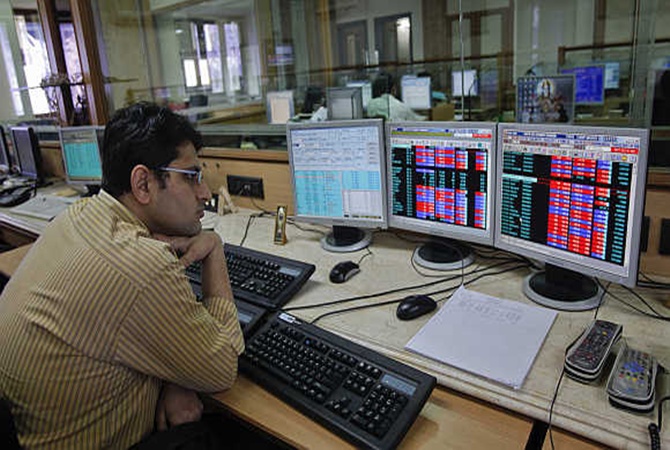

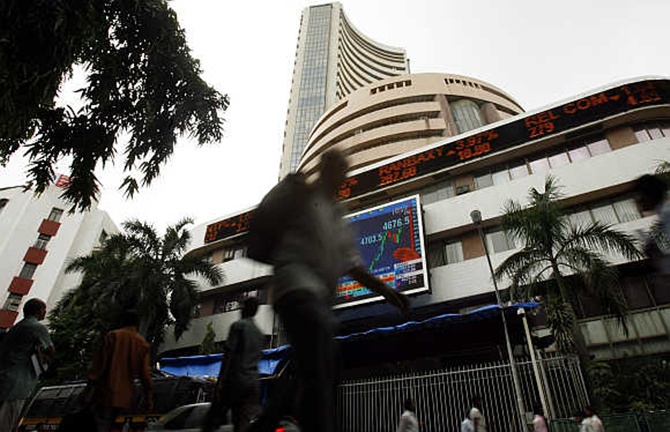
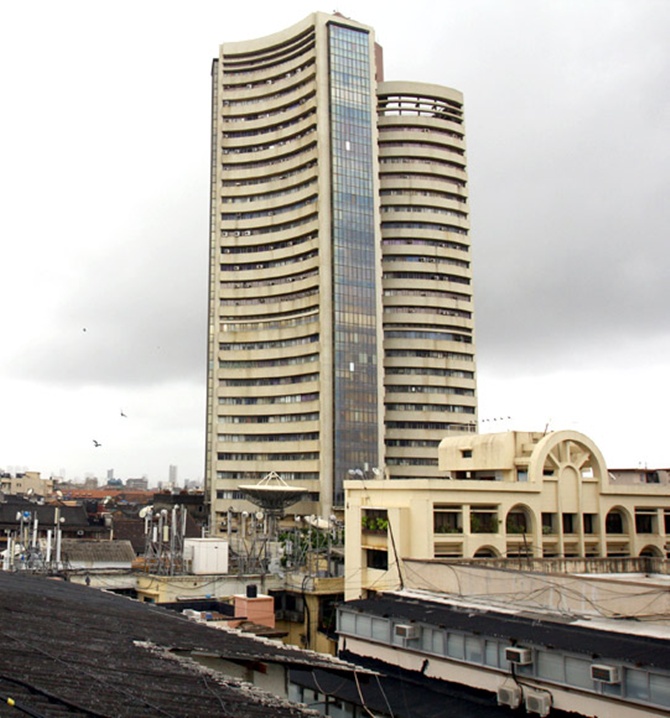
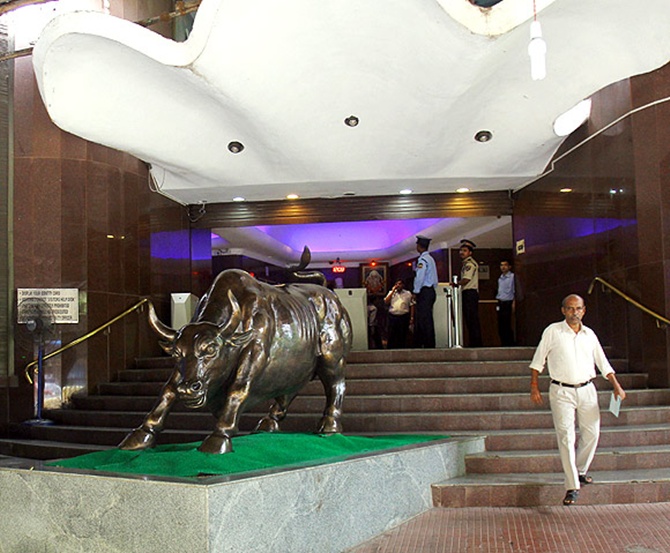

article